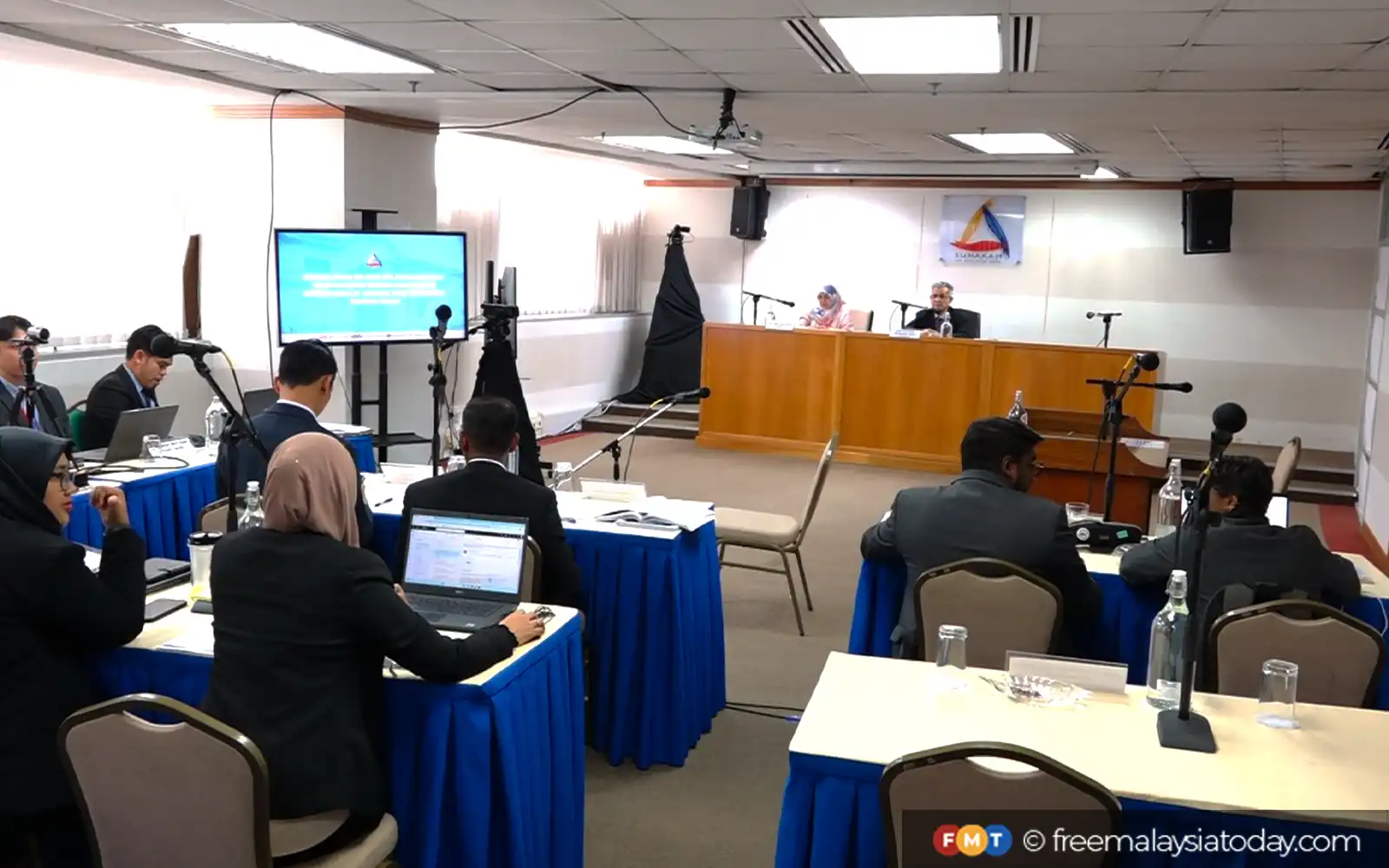
A Taiping prison officer today admitted to striking inmates multiple times during their relocation from Hall B to Block E in January, stating that he acted “spontaneously” and out of stress after being verbally provoked.
Saiful Azman, 43, a sergeant, told a Human Rights Commission of Malaysia (Suhakam) inquiry that although he was instructed to enter Hall B to maintain security, he ended up using his baton against several inmates — even after they had sat down with their hands over their heads in surrender.
Suhakam chairman Hishamudin Yunus and commissioner Farah Nini Dusuki are leading a panel overseeing an inquiry into claims that about 60 prison wardens assaulted more than 100 inmates at the Taiping prison on Jan 17.
Suhakam is investigating the alleged abuse, which is believed to have resulted in the death of one inmate and injuries to several others.
Saiful was seen in CCTV footage striking inmates several times with his baton, even after they had ceased resisting.
Upon questioning, Saiful admitted to overreacting and said he could not explain the repeated blows, which he said was the first time in his 21-year career that he had used a baton on an inmate.
“I acted spontaneously. I was not calm,” he said, adding that the situation escalated after inmates shouted vulgarities and issued death threats.
“One of the detainees said he wanted to rape our wives,” he said.
“Wardens’ wives?” asked Farah.
“Yes,” replied Saiful.
Saiful said these threats deeply affected him and caused him to lose his self-control.
He cited Rule 5.2.2 of Taiping prison’s in-house guidelines, which he said permits the use of force to “weaken” but not injure inmates. The rule, however, is not publicly documented or part of the Prisons Act.
When asked by Hishamudin whether striking seated inmates multiple times amounted to a breach of that same rule, Saiful replied that he did not target “sensitive areas” and was unsure if his actions technically violated the rule.
Nonetheless, he admitted that his conduct was not in accordance with standard operating procedures and had likely contributed to the escalation of tensions inside the hall.






